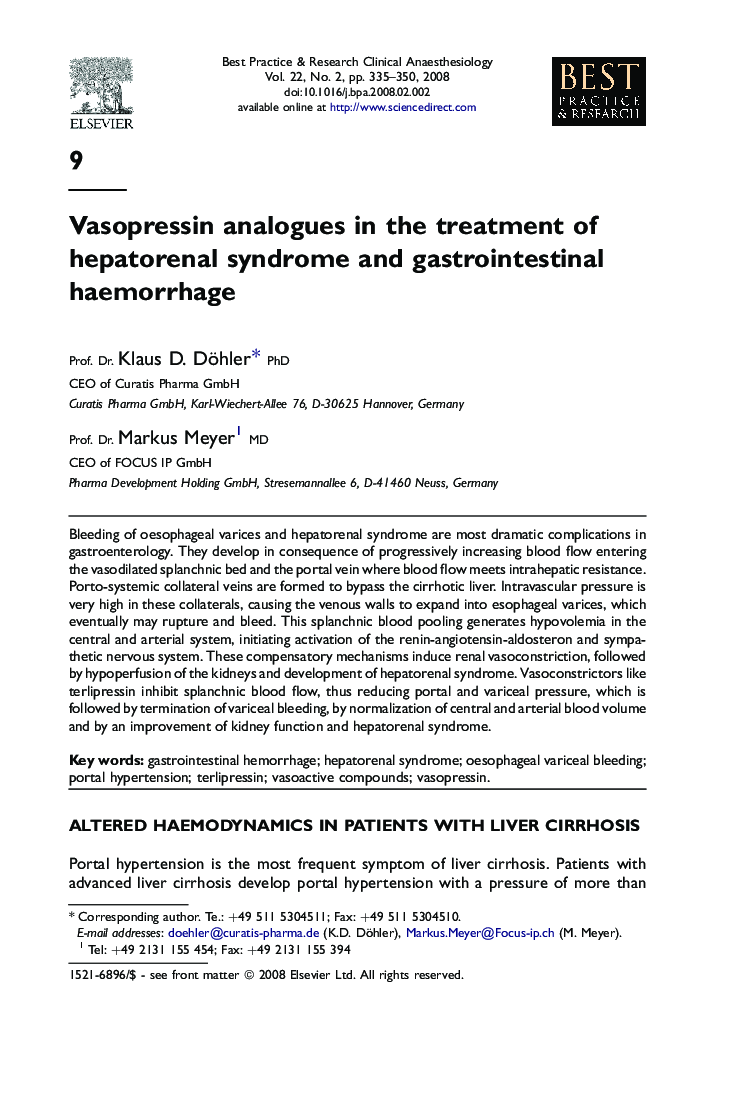| Article ID | Journal | Published Year | Pages | File Type |
|---|---|---|---|---|
| 2748614 | Best Practice & Research Clinical Anaesthesiology | 2008 | 16 Pages |
Bleeding of oesophageal varices and hepatorenal syndrome are most dramatic complications in gastroenterology. They develop in consequence of progressively increasing blood flow entering the vasodilated splanchnic bed and the portal vein where blood flow meets intrahepatic resistance. Porto-systemic collateral veins are formed to bypass the cirrhotic liver. Intravascular pressure is very high in these collaterals, causing the venous walls to expand into esophageal varices, which eventually may rupture and bleed. This splanchnic blood pooling generates hypovolemia in the central and arterial system, initiating activation of the renin-angiotensin-aldosteron and sympathetic nervous system. These compensatory mechanisms induce renal vasoconstriction, followed by hypoperfusion of the kidneys and development of hepatorenal syndrome. Vasoconstrictors like terlipressin inhibit splanchnic blood flow, thus reducing portal and variceal pressure, which is followed by termination of variceal bleeding, by normalization of central and arterial blood volume and by an improvement of kidney function and hepatorenal syndrome.
